The Chilean Patagonia is the headquarters of biologist Vreni Häussermann, a German with Chilean nationality who in 1994 came to investigate this southern paradise together with marine ecologist Günter Försterra - whom she would later marry - to see with her own eyes one of the wildest places on Earth: the Chilean fjords. The impact was total, a love at first sight with a territory of extraordinary biodiversity that, as they could see, remained vastly unexplored.
Undoubtedly, the fjords offer no easy orography to study, but Häussermann dedicated herself to it with such good results that in 2016 Rolex wanted to support her work with an Initiative Award: no one like her knows what hides this area, one of the most important hotspots, or biodiversity hotspots, on the planet.
Chile's Patagonian fjords are the largest in the world
Intimately associated with glaciers, the wild fjords are found in the high latitudes of both hemispheres of the Earth. Carved by the action of ice during the Quaternary glaciations, they are deep U-shaped valleys invaded by the sea, which here reach a depth of 1,300 meters. It is not for nothing that the fjords of Chile's Patagonia are the largest in the world. "If from north to south they occupy a coastal stretch of about 1,500 kilometers, their intricate coastline totals more than 100,000 kilometers. That's almost twice around the world," says Häussermann.
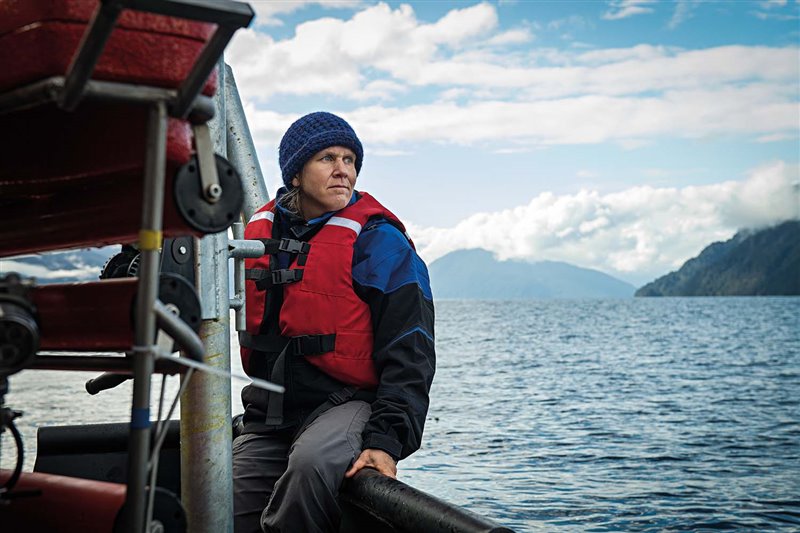 PHOTO: @ROLEX/AMBROISE TÉZENAS
PHOTO: @ROLEX/AMBROISE TÉZENAS
This land of stormy seas and snow-capped peaks located more than 12,500 kilometers from her native country is her home and that of her family. Vreni Häussermann is a researcher and professor at the Universidad San Sebastián in Puerto Montt, in the Los Lagos region, and directed the Huinay Science Center from 2003 to 2020. She began her scientific work in this corner of the world by exploring with Försterra the strip of sea that they could access with their diving equipment, the first30 meters deep, knowing that it represented just over 2% of the total water column,but in those 30 meters alone they discovered up to 200 unknown species. Imagining the totality of the biodiversity that lay beneath these waters convinced Häussermann that they were looking at a world of undiscovered species. The observation boats that had tried so far had not been able to get very close to the rocks, where there is most life. How could they uncover the wild depths of Patagonia? At that moment, it seemed beyond their reach.
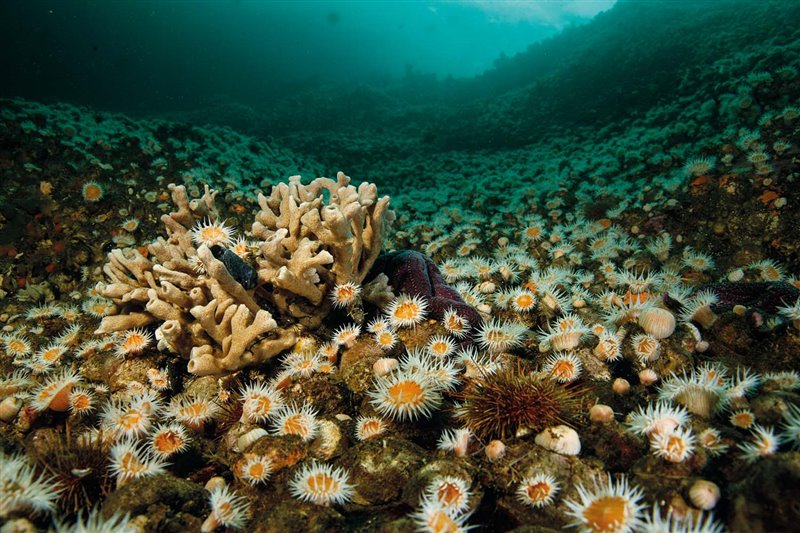 PHOTO: @VRENI HÄUSSERMANN & GÜNTER FÖRSTERRA
PHOTO: @VRENI HÄUSSERMANN & GÜNTER FÖRSTERRA
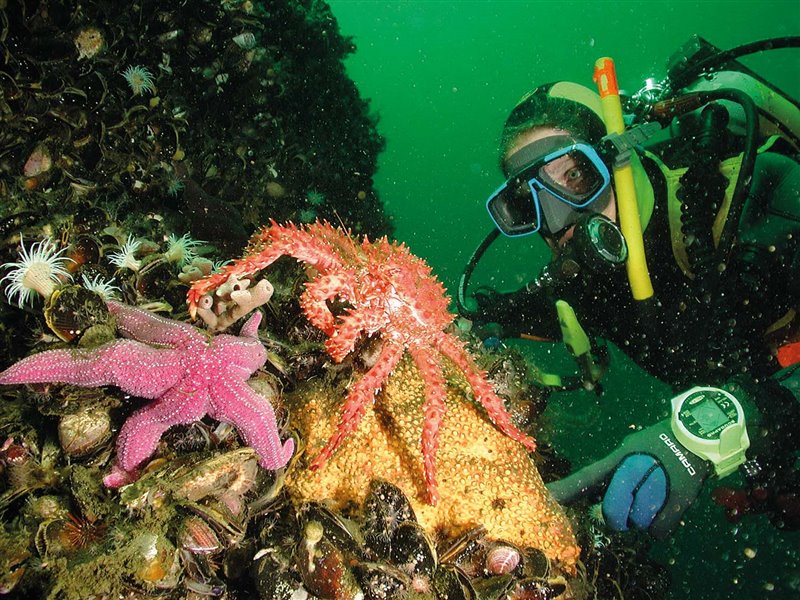 PHOTO: @VRENI HÄUSSERMANN & GÜNTER FÖRSTERRA
PHOTO: @VRENI HÄUSSERMANN & GÜNTER FÖRSTERRA
2012 came and, with it, the beginning of episodes of mass mortality that deeply impressed Häussermann. More than 10 kilometers of coral banks, composed in these latitudes by organisms adapted to much colder and darker waters than those of tropical corals, were wiped out. This type of reef occupies a larger area than its "relatives" in the tropics and is a very important ecosystem for many species, including fish, mussels, barnacles, anemones, sponges and gorgonians. On another occasion, another anomalous event also killed a multitude of sardines, salmon, jellyfish, mollusks and large whales, such as the northern minke whale (Balaenoptera borealis). Vreni Häussermann was able tocount the carcasses of up to 360 individuals of up to 16 meters stranded on the shores of the fjords.
Several episodes of mass mortality in the area made a strong impression on Häussermann, who decided to analyze this ecosystem in depth.
Here too, reflects the biologist, in one of the last wild frontiers of the planet, human activity is leaving its mark. Global warming (leading to acidification and deoxygenation of the oceans), fishing, fish farming and pollution have unleashed a slow chaos. "In 10 years alone, some of the most numerous species have declined by 75 %," says Häussermann, who is particularly concerned about the effects of aquaculture. "When I arrived there were just three farms. Today there are more than 20, and that is an upward trend, as the human population in this area is growing." This activity, he adds, causes serious problems, such as the introduction into the environment of antibiotics that are given to the animals to achieve optimal growth, and the emission of a large amount of nutrients and chemicals. One of these large facilities produces as much waste as a city of 55,000 people," he says. It's like a small town dumping all its untreated waste into the sea. Underneath the farms, the sea floor is barren, covered by a blanket of white bacteria." These environmental disasters hit the fishermen and the local economy hard, sparking protests that spawned, according to Häussermann, Chile's first major environmental movement. Since then, in addition to research, this persevering woman has devoted much of her time to spreading the word about the treasures hidden in these icy, murky waters, giving talks and filming these wonders for short documentaries. "We are in danger of destroying a treasure that we have not even known about".
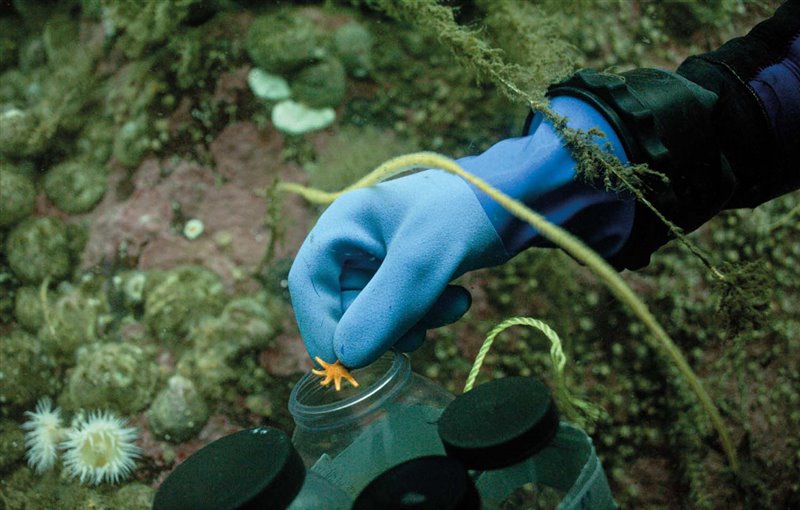 ©JEFFREY GARRIOCK
©JEFFREY GARRIOCK
Fortunately, the struggle that this biologist in love with these southern seas waged in the Chilean fjords was transcending borders and in 2016 Rolex awarded her with the Initiative Award, those awards that the watch company has been giving for four decades to entrepreneurs around the world who lead extraordinary projects to make the world a better place. This award meant a lot to Häussermann, because thanks to it she was able to take an ROV, a remotely operated vehicle, to remote places to explore this ecosystem up to 500 meters deep, even deeper.
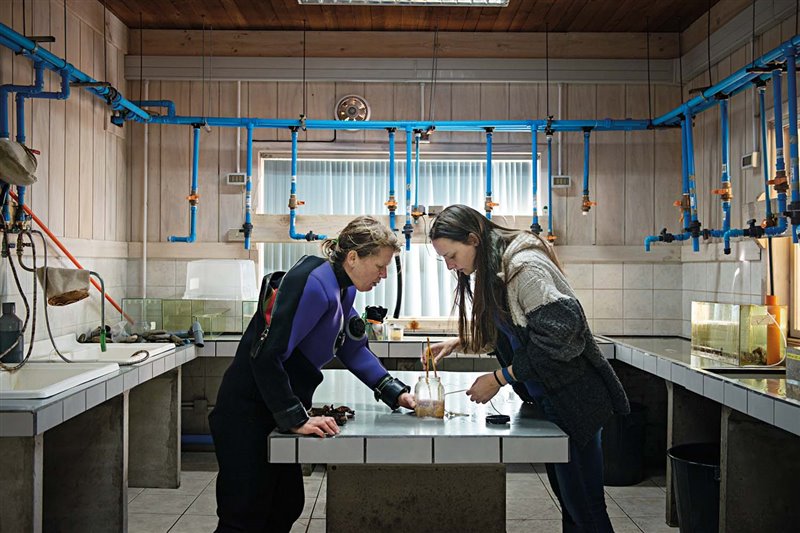 ©ROLEX / AMBROISE TÉZENAS
©ROLEX / AMBROISE TÉZENAS
While documenting and inventing all the species that she observes in these depths where gigantic forests coexist with coral reefs and gorgonian fields, the biologist fights to declare protected areas that are safe from the inevitable economic pressures that lead to the overexploitation of resources that must continue to sustain the local population and also future generations. These places must remain wild, because, as the writer and philosopher Henry David Thoreau said in the 19th century, it is in the wilderness that the preservation of the world lies.
Update: Sad news from Huinay
When this article had just gone to press, Vreni told us the sad news: "We have a horrible brown tide in the fjord that has caused the death of millions of salmon throughout the area. In addition, we fear that when the algae that make up this tide die, a process that consumes a lot of oxygen, it will cause hypoxia that will endanger all marine life."
Harmful algal blooms (HABs) occur, for example, when an excessive release of nutrients into the water causes algae to grow out of control, saturating the ecosystem. Some of these blooms produce toxins that can kill marine animals and even cause human illness and death in extreme cases. There are also blooms caused by algae that are not toxic, but still consume all the oxygen in the water as they decompose, which also kills underwater life. "Depending on the species involved and thus the color of the bloom, they are often referred to as red tides, brown tides or green tides," explains Häusermann. The exact mechanisms of HABs are not yet fully understood, but we know that they proliferate when factors such as water temperature, salinity, solar radiation and nutrient concentration and composition combine favorably."
In the marine environment there are two large groups of algae in constant competition, diatoms and dinoflagellates. Ninety percent of HABs are caused by dinoflagellates, whose blooms are favored by high salinity and strong solar radiation and depend on the availability of phosphorus and nitrogen in the water, the latter in the form of ammonia and nitrate. Although diatoms tend to dominate in the fjords and channels of Chilean Patagonia, climate change and the consequent increase in the frequency, duration and severity of dry periods favors dinoflagellates. "In addition to these climatic trends, certain human activities such as salmon farming contribute a lot of nitrogen to the water. Fish excrete a lot of ammonia, which is a fertilizer, and ammonia can be transformed into nitrate, which is also a fertilizer for these microalgae."
In the Comau Fjord, large amounts of organic matter have been released due to salmon mortality in the net pens and during their withdrawal, which adds to the organic matter from this large algal bloom. If more organisms die as a result of hypoxia, more and more oxygen will be consumed, starting a vicious cycle. "For the Comau Fjord, a unique and fragile ecosystem, this would be a disaster. At this point we can only cross our fingers that this doesn't happen," says Häusserman.